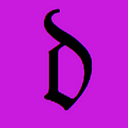Member-only story
Helvetica: An ode to the joy of retail therapy
The ghost in the machine of “corporate vanilla”
As an archetypical jock with a military dad, Andy Roddick possessed the background, work ethic, and attitude of a champion. In 2003, Roddick won his first US Open trophy. It was widely expected that he would have a record-breaking career and would dominate tennis in the tradition of American greats like John McEnroe, Pete Sampras, and Andre Agassi. Roddick did go on to establish a distinguished career as a hard-battling and popular professional but he never won a major again.
Instead, the subsequent year, an elegant man from Switzerland arrived in New York and claimed the American trophy. His name was Roger Federer. Federer proceeded to conquer America in a way no tennis player has before or since — winning the US Open five times in a row, between 2004–2008. However, Federer was not the first Swiss native to enjoy unprecedented dominance in the United States.
Before Federer, there was Helvetica.

Origins
The impetus for Helvetica’s creation, the apocryphal story goes, came from Edouard Hoffmann. Hoffman was the head of Zurich’s Haas’sche Schriftgießerei (or, simply, the “Haas” type foundry).
In 1947, Hoffman hired a talented designer named Max Miedinger as a customer counsellor and typeface sales representative for the Haas Studio in Münchenstein near Basel. Miedinger was trained as a typesetter and had attended evening classes at the Kunstgewerbeschule in Zurich. Between 1936–46, he worked as a typographer in the studio of the town’s Globus department store. In 1956, he went freelance, and Hoffman commissioned him to work on Haas’s new sans serif typeface. Hoffmann also directed Hermann Eidenbenz’s work on Clarendon.
Hoffman and Miedinger were motivated by the renewed, post-war demand for san serifs in Europe at the time. European sans serif typefaces were a distinguished pedigree. Experts consider them descendants of the great Khan of the San Serifs: Akzidenz Grotesk. However, Hoffman and Miedinger felt th older ideas needed refreshing. Dan Reynolds writes: “While Helvetica was not simply a reworking of Akzidenz-Grotesk, its initial development as Neue Haas-Grotesk in Switzerland reflected, in part, the…

